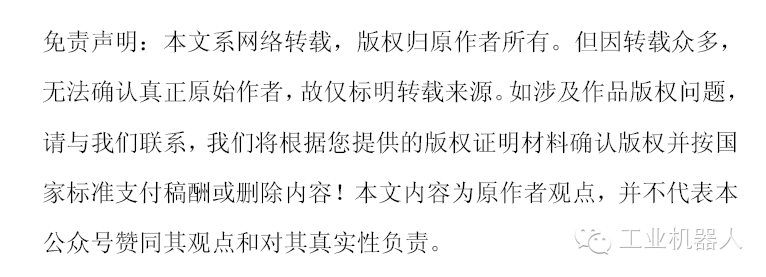

Engelberg, known as the “father of robotics,” passed away on December 3. The robotics industry association stated that because of him, robotics has become a global industry, highlighting his crucial role in the development of robotics. So, what significant events in the grand history of robotics are worth our understanding?
First, let’s clarify what a robot is. The definition of a robot by Chinese scientists is: a robot is an automated machine that possesses some intelligent capabilities similar to those of humans or living beings, such as perception, planning, movement, and collaboration. It can accept commands from humans, run pre-programmed procedures, and act based on principles established by artificial intelligence technologies.
[Ancient Robots]
The term “robot” and the emergence of the world’s first industrial robot are both relatively recent developments. However, the human fascination with and pursuit of robots dates back over 3,000 years. Humans have longed to create machines that resemble humans to replace them in various tasks.
According to a fable recorded in the “Book of Crafts” from the Warring States period, a craftsman in ancient China, known as a “Yanshi,” created a singing and dancing automaton using animal skins, wood, and resin. This automaton not only looked exactly like a real person but also had thoughts and emotions, even desires. Although this is a fantasy from a fable, it utilized the technological achievements of the Warring States period and represents the earliest recorded prototype of a wooden robot in China.
Those who have read “The Da Vinci Code” may know that Leonardo da Vinci was not only a painter but also skilled in mechanics.
Over 500 years ago, based on his knowledge of human anatomy, da Vinci designed a primitive robot using wood, leather, and a metal shell. According to records, this robot was driven by gears and had connecting rods between its body parts, allowing it to perform simple actions and even produce sounds, as it was equipped with an automatic drum mechanism. However, modern people cannot determine whether da Vinci actually built this robot, but based on his design, it can be restored to what is considered the world’s first humanoid machine, the “mechanical knight.”
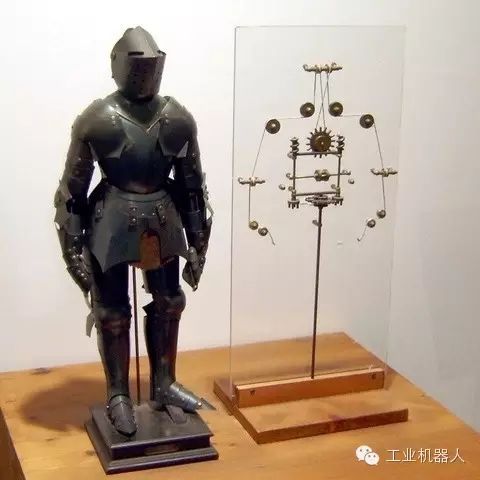
The primitive robot designed by da Vinci
Similarly, utilizing the principles of gears and springs, in the 19th century, Swiss watchmakers invented a writing robot. In fact, many inventions in today’s youth maker tutorials still use the principle of gear transmission, with the difference being the addition of a motor for drive.
Between the Warring States and the Renaissance, some inventors in China designed many mechanical devices, such as Zhuge Liang’s early “wooden flowing ox and horse” machine, which was used for transporting military rations. Additionally, there was Zhang Heng’s invention of the “counting drum cart,” which could automatically calculate the distance traveled and provide a drumming reminder.
According to Wikipedia, in 1738, French technician Jacques de Vaucanson invented a mechanical duck that could quack, swim, drink water, and even eat and excrete. This mechanical duck was primarily used for medical research.
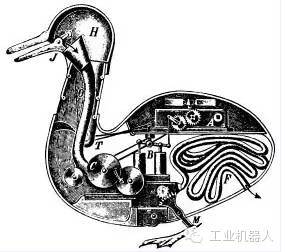
The mechanical duck with biological functions
The earliest remote control device was the torpedo control device demonstrated in the late 19th century, known as the Brennan torpedo. This device was invented in 1897 and was the world’s first practical missile control device. Subsequently, wireless remote control systems became widely used in robotics and other fields.
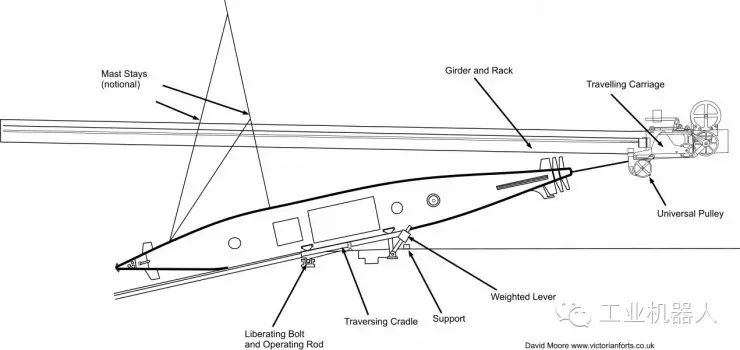
The first remote control system
[The Birth of Humanoid Robots]
The term “robot” first appeared in the work of Czech writer Karel Čapek in 1921, used to describe fictional robot characters.
Based on previous technologies, in 1927, engineer George Devol from Westinghouse manufactured the first robot, “Televox,” which was exhibited at the World’s Fair in New York. It was an electric robot equipped with a radio transmitter that could answer some questions, but it could not move.
In 1928, W. H. Richards invented the first humanoid robot. This robot was equipped with a motor device that allowed for remote control and sound frequency control.
Also in 1928, Japanese biologist Makoto Nishimura developed the first domestic robot, “Gakutensoku.”
[Modern Autonomous Robot Research]
The research and development of modern robots began in the mid-20th century. At that time, due to breakthroughs in computer technology and the demand for atomic energy development, industrial robots that could be put into production emerged. Computer technology supports the automated operation of robots, while radioactive atomic energy…
In 1942, the famous American science fiction writer and literary critic Isaac Asimov proposed the “Three Laws of Robotics” in his work “I, Robot,” which is considered the cornerstone of modern robotics. Engelberg discussed this philosophical principle with George Devol when they first met.
Asimov proposed:
First Law: A robot may not injure a human being or, through inaction, allow a human being to come to harm;
Second Law: A robot must obey the orders given it by human beings except where such orders would conflict with the First Law;
Third Law: A robot must protect its own existence as long as such protection does not conflict with the First or Second Law.
In 1954, George Devol first proposed the concept of industrial robots and applied for a patent. The essence of the patent was to control the robot’s joints using servo technology, allowing human hands to teach the robot movements, enabling the robot to record and reproduce actions. This was the world’s first programmable robot, which began working on the General Motors production line in 1961.
The control method used by Unimate is called “teaching and reproducing robots,” and most modern industrial robots still use this control method.
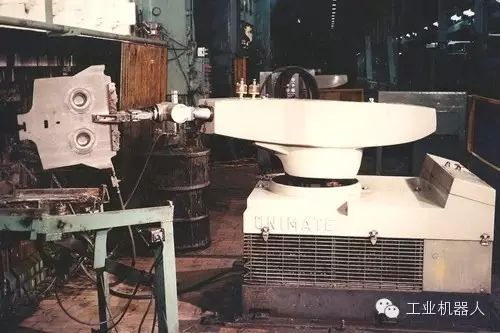
The working robot Unimate
[Industrial Robot Industrialization]
With George Devol’s patented technology, Engelberg founded the world’s first robot company, Unimation. Utilizing the patented technology authorized by George Devol, Unimation developed the world’s first industrial robot in 1959.
The robotics industry association stated: “Because of Engelberg, robotics has become a global industry.”
“Do you think robots can do this?” Engelberg’s question inspired many researchers who together promoted the global application of robots.
In 1959, the Servomechanisms Laboratory at the Massachusetts Institute of Technology (MIT) demonstrated the technology of robot production. Based on computer-assisted technology, the robot successfully manufactured an ashtray.
In 1965, MIT demonstrated the first robot system with a visual sensor that could recognize and locate simple blocks.
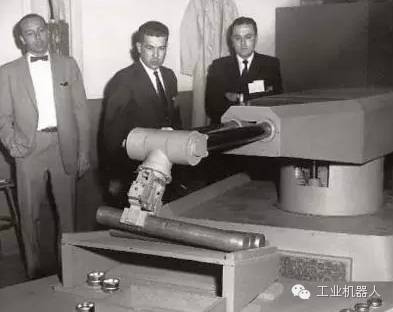
MIT’s robot research
In 1969, Ichiro Kato’s laboratory at Waseda University in Japan developed the first bipedal walking robot. Ichiro Kato has long been dedicated to the research of humanoid robots and is known as the “father of humanoid robots.”
In 1992, Boston Dynamics, which spun off from MIT and was later acquired by Google, successively developed military robots capable of upright walking, such as “Atlas,” and quadrupedal all-terrain robots like “BigDog” and “Cheetah,” which are truly impressive.
The Atlas robot, standing 1.9 meters tall, has well-formed limbs and torso, equipped with 28 hydraulic joints, and its head contains a stereo camera and laser rangefinder. Besides karate, researchers from the Florida Institute for Human and Machine Interaction even wrote built-in software to allow Atlas to drive. Therefore, Atlas can undoubtedly be considered one of the world’s most advanced robots.
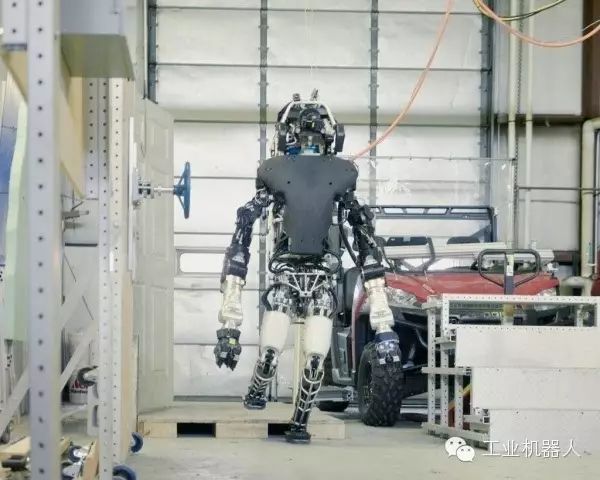
Atlas, one of the world’s most advanced military robots
In the mid-20th century, Japan was dedicated to developing humanoid robots. Initially, due to labor shortages, Japan’s robotics industry focused on industrial robots; later, due to serious aging population issues, it shifted towards service and entertainment robots.
In 1969, Ichiro Kato’s laboratory at Waseda University developed the first bipedal walking robot. By 1980, industrial robots had truly become widespread in Japan—this level of proliferation is unmatched by other countries.
Famous Japanese robots include Sony’s robotic dog “AIBO” launched around 2000, and Honda’s humanoid robot “ASIMO,” which can walk and run in a manner close to that of humans.
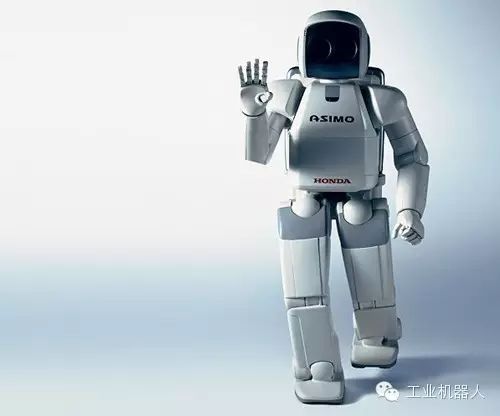
The robot ASIMO
Today, the characteristics of robot development can be summarized as follows: Horizontally—applications are becoming increasingly broad. In addition to addressing daily production and living needs, scientists hope robots can handle more tasks, including exploring outer space.
In 2012, the United States successfully sent the first humanoid robot, named “R2,” to the International Space Station. This robotic astronaut has a range of activities similar to that of humans and can perform some relatively dangerous tasks like a human astronaut.
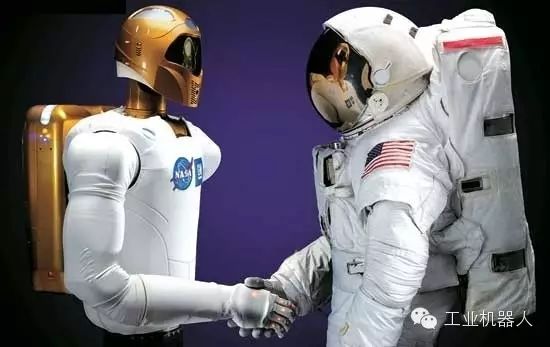
The robotic astronaut heading to space
[Artificial Intelligence Robots Breakthrough in Deep Learning]
Today, the terms “artificial intelligence” and “deep learning” have been widely recognized, but significant research has been conducted over the past thirty years. With the advent of the big data era, deep learning technologies based on data have achieved breakthrough developments in areas such as speech recognition, image recognition, and human-machine interaction. Typical representatives of artificial intelligence robots include IBM’s “Watson” and “Pepper.” In the future, deep learning will remain a significant trend in robotics research.

(Source: Lei Feng Network)

